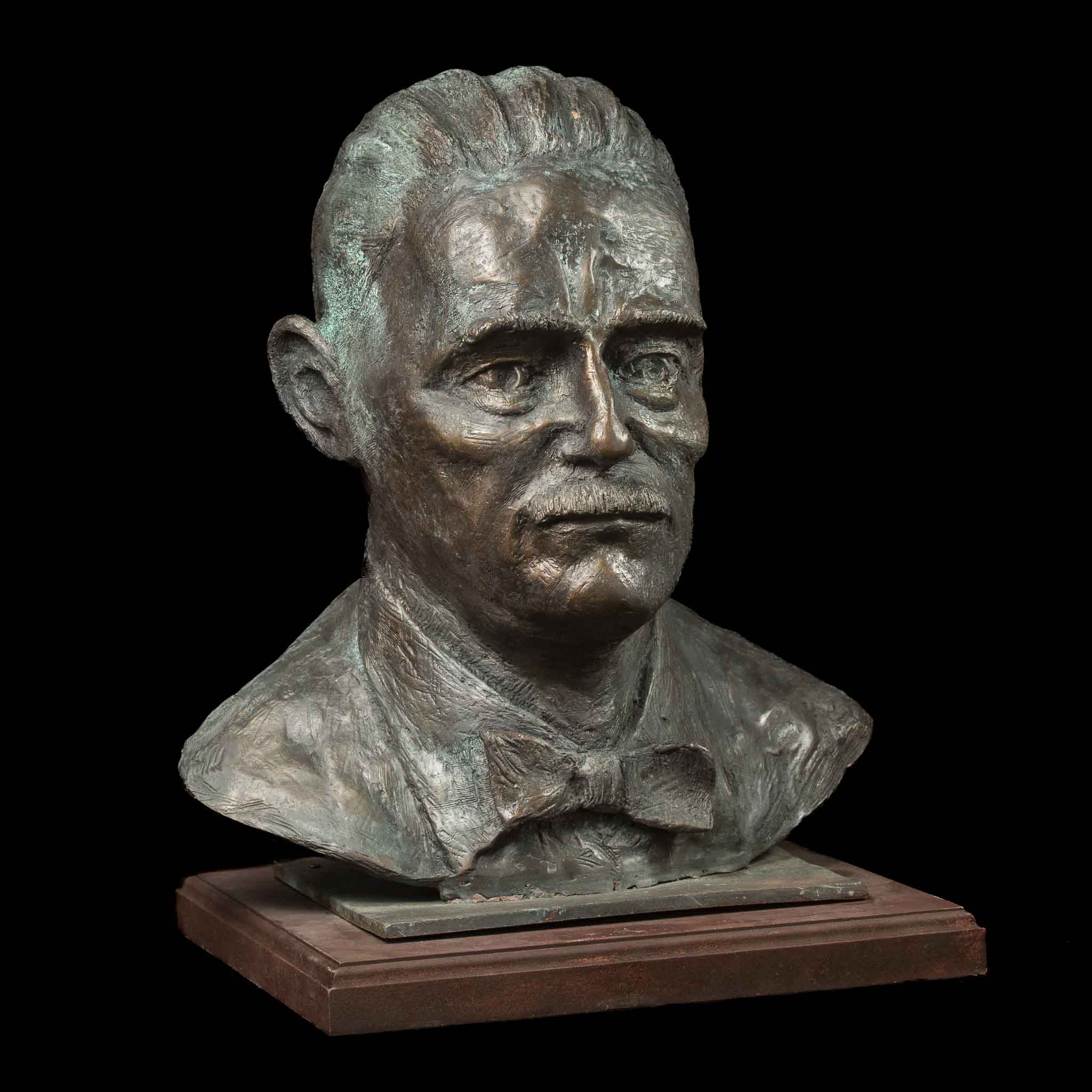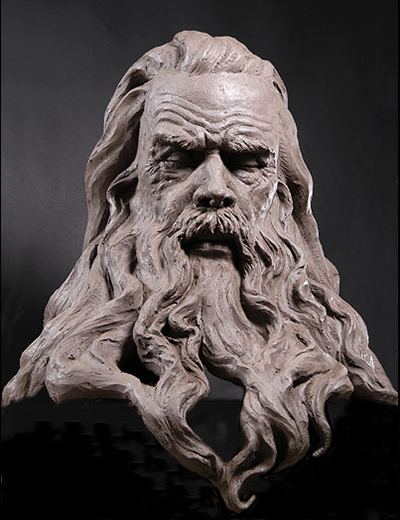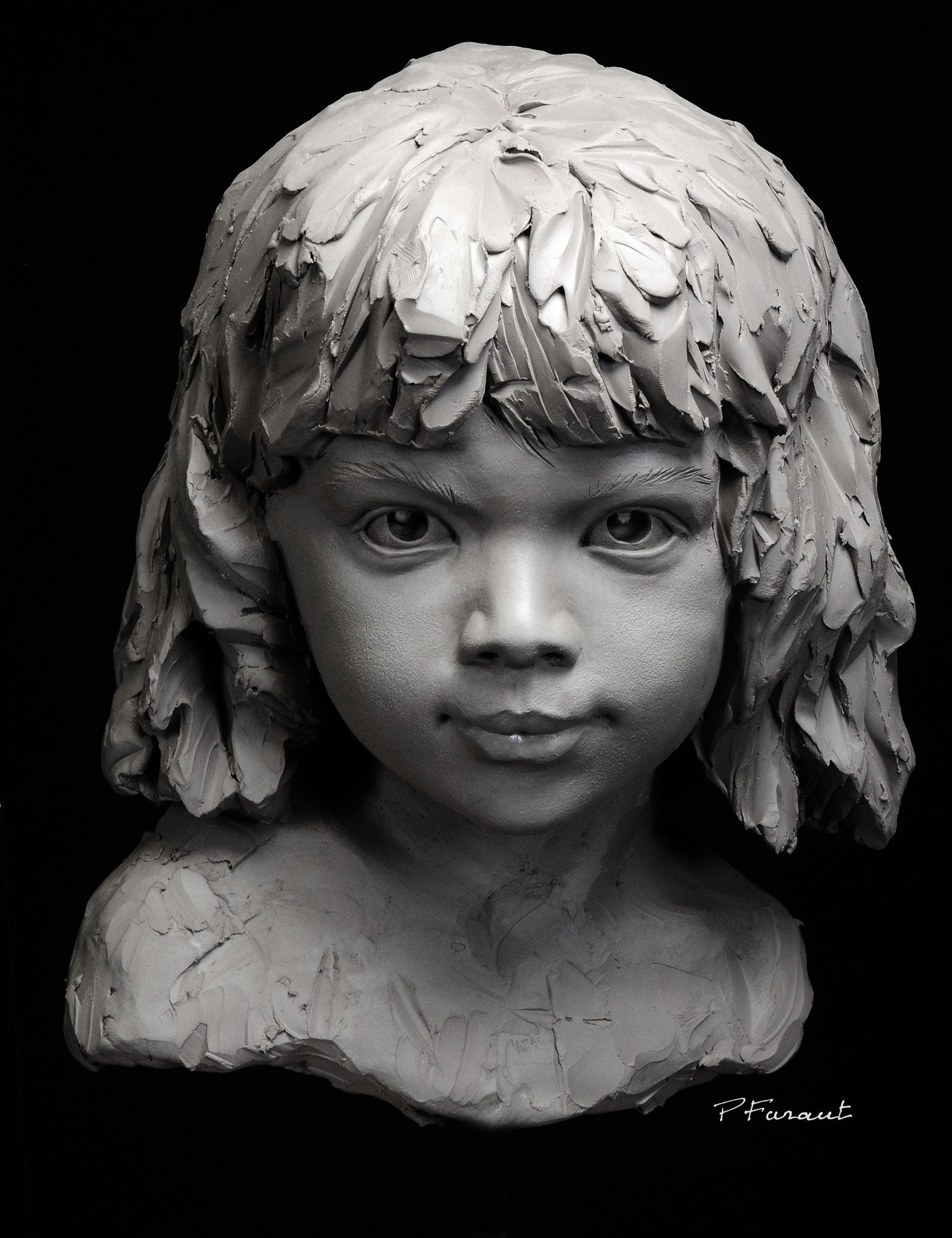Crafting Expressions: The Unique Artistry of a Portrait Sculptor
Wiki Article
The Evolution of Sculptures: From Ancient to Modern
The Evolution of Sculptures: From Old to Modern. Bronze Sculptures.Sculpture, among the oldest kinds of art, has been an important component of human world for centuries. From the ancient people of Egypt and Greece to the contemporary period, sculptures have progressed, reflecting modifications in artistic strategies, materials, and cultural influences. This trip through time traces the development of sculptures, checking out the changes stylishly, subject matter, and creative expression.
Starting with the ancient world, sculptures crafted from stone and later on bronze recorded the essence of deities, leaders, and day-to-day life. The Renaissance duration witnessed a resurgence of classical sculpting techniques, as artists sought to imitate the elegant kinds of ancient Greek and Roman sculptures (Robert C Hitchcock Sculptor). In the modern-day era, musicians tested traditional boundaries, welcoming abstraction and experimentation with brand-new materials
This expedition will dive right into the diverse evolution of sculptures, disclosing the rich tapestry of imaginative expression across various periods and societies.

Old Sculptures: From Stone to Bronze
Ancient sculptures transitioned from being carved out of stone to being cast in bronze. This change marked a substantial evolution in the art of sculpture, permitting better refinement and detail in the ended up jobs. Stone sculptures, while outstanding in their very own right, were limited by the nature of the material. Rock called for substantial carving and forming, usually resulting in a much more simplified representation of the topic.The introduction of bronze as a medium for sculptures produced a change in imaginative expression. Bronze offered sculptors the opportunity to develop natural and detailed forms that were not possible with rock. The process of casting bronze enabled the creation of multiple copies of a sculpture, allowing wider distribution and preservation of these creative masterpieces.
The shift from stone to bronze also saw a shift in the subject matter of sculptures. While rock sculptures predominantly depicted gods, sirens, and mythical numbers, bronze sculptures started to show a wider variety of topics, consisting of day-to-day individuals and pets. This growth of subject showcased the flexibility and versatility of the bronze medium.
Renaissance Revival: Sculpting in the Timeless Design
The Renaissance rebirth of sculpture saw a revival in the classic design, structure upon the developments made during the change from rock to bronze in ancient sculptures. During this period, artists looked for to recreate the classic aesthetic and ideals of elegance that prevailed in ancient Greek and Roman sculptures.One of the vital features of the Renaissance resurgence was the emphasis on naturalism and the human form. Sculptors like Donatello and Michelangelo make every effort to catch the anatomical information and expressions of their subjects with unprecedented accuracy. They examined the human body and included their observations into their sculptures, causing realistic and natural representations.
An additional crucial facet of the Renaissance resurgence was the exploration of viewpoint and depth. Musicians utilized techniques such as contrapposto, where the weight of the body is changed away, producing a feeling of movement and dynamism. They additionally try out various materials, consisting of marble and bronze, to achieve a level of class and details in their sculptures.

Modernism and the Avant-Garde: Damaging Standard Limits
During the Innovation and Avant-Garde activities, artists pressed the borders of conventional imaginative conventions. This period, which emerged in the late 19th and early 20th centuries, saw a dramatic shift in the means artists came close to sculpture. Denying the concept of art as plain imitation, modernist carvers looked for to discover new types, products, and concepts.
One of the vital qualities of modernist sculpture was the focus on abstraction. Sculptors moved away from practical representations and instead focused on capturing the essence of the topic via streamlined forms and geometric shapes. This departure from typical depiction allowed artists to express their emotions and ideas in a much more individual and subjective manner.

Contemporary Sculptures: Discovering New Materials and Concepts
With a focus on checking out brand-new products and principles, modern sculptures have changed the area of art. Artists today are pressing the boundaries of traditional sculpture by using cutting-edge products and trying out with abstract principles. These sculptures test traditional ideas of materiality, definition, and kind, inviting customers to take part in a new and thought-provoking creative experience.Contemporary carvers are embracing a large range of materials, including plastic, glass, metal, and also raw material. They are not limited to the conventional medium of stone or clay, permitting greater freedom of speech and trial and error. This change towards unique materials has opened up brand-new opportunities for artists to produce sculptures that are vibrant, interactive, and visually striking.
Along with discovering new materials, modern sculptures also look into complex and abstract principles. Musicians are now discovering motifs such as identity, social concerns, and the setting, utilizing sculpture as a powerful tool for social commentary and self-questioning. These sculptures challenge visitors to believe critically and engage with art on a much deeper level, sparking discussions and provoking psychological reactions.
Global Impacts: Sculptural Customs From Worldwide
Sculptural customs from various areas of the world have actually significantly shaped the evolution of sculptures throughout background. The international influences on sculpture have actually been varied and have actually contributed to the splendor and variety of imaginative expressions. From the ancient worlds of Egypt, Greece, and Rome to the elaborate makings of Asian cultures, each area has created its distinct sculptural practices that have influenced artists across time.In ancient Egypt, check this site out sculptures were developed mainly for spiritual and funerary functions. The renowned sculptures of gods and pharaohs, such as the Great Sphinx and the breast of Queen Nefertiti, showcase the Egyptians' mastery of rock sculpting and their belief in the immortality.

In old Rome, sculpture offered both creative and political functions. Roman sculptures frequently illustrated emperors, generals, and mythical figures, reflecting the power and majesty of the realm. The marble statuary of Augustus of Prima Porta and the significant Arc of Constantine are noteworthy instances of Roman sculptural accomplishments.
Asian sculptural traditions, specifically in India, China, and Japan, have additionally had a profound effect on the development of sculptures. Japanese sculptures, influenced by Buddhism, emphasize simplicity and peace, seen in the serene statues of Buddha and the sophisticated art of bonsai.
The global influences on sculpture proceed to advance in the modern-day age. Musicians today draw inspiration from various sculptural practices, including brand-new products, strategies, and ideas to create innovative and provocative art work. The combination of different social impacts has generated a dynamic and varied sculptural landscape, showing the interconnectedness of our global culture. As we look to the future, it is certain that the international impacts on sculpture will proceed to shape and redefine this ancient art form.
Conclusion
In final thought, the advancement of sculptures has seen a change from old stone and bronze works to the classical rebirth during the Renaissance. Today, contemporary sculptures discover new products and principles, while likewise attracting inspiration from worldwide sculptural practices.From the old worlds of Egypt and Greece to the contemporary age, sculptures have progressed, mirroring changes in creative methods, materials, and social impacts.Beginning with the ancient world, sculptures crafted from stone and later bronze caught the significance of divine beings, leaders, and everyday life.Ancient sculptures transitioned from being carved out of rock to being cast in bronze. While stone sculptures primarily illustrated gods, sirens, and mythical numbers, bronze sculptures started to show a more comprehensive array of subjects, including everyday people and animals.In verdict, the advancement of sculptures has seen a shift from old stone and bronze functions to the classical rebirth throughout the Renaissance.
Report this wiki page